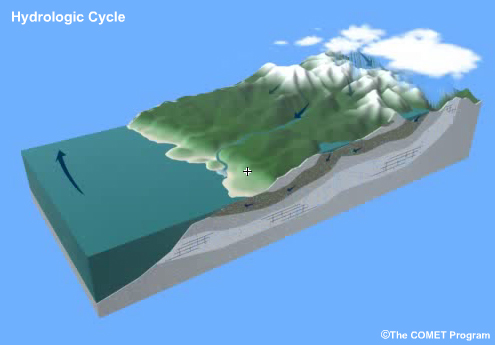Weather and the Urban Watershed

When the rain falls and the snow melts, all of the resulting runoff moves through the local watershed, our environmental home. What happens to that water as it makes its way to our rivers and streams? That all depends on the characteristics of the local watershed.
In an urban setting, the watershed has most likely seen considerable changes from its natural state. The flow of water in an urban drainage is very different from a less developed one. Major rivers or streams may be confined to narrow, straight banks. Smaller creeks and streams might be diverted into concrete-lined ditches or culverts. Wetlands might be drained and replaced with parking lots, buildings, or roads and highways. Woodlands and fields are few and far between, mostly paved over as well.
All of these changes to the environment play a major role in how water moves through the urban watershed and on its quality as it moves into the rivers, lakes, wetlands and coastal areas downstream.